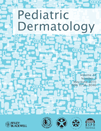Dilated Cardiomyopathy in Epidermolysis Bullosa: A Retrospective, Multicenter Study
Research conducted at: Hospital for Sick Children, Toronto, ON, Canada.
Abstract
Abstract: Dilated cardiomyopathy (DC) has been reported in severe epidermolysis bullosa (EB) subtypes. Poor nutritional status, low carnitine levels, selenium deficiency, chronic iron overload, drugs and viral etiology have been proposed as potential contributors. This was a retrospective, descriptive, multicenter study describing EB patients that developed DC, and determining potential pre-disposing risk factors. Fifteen patients were enrolled in the study; 11 of them were male subjects (73%). Eighty-seven per cent of the participants had dystrophic EB and 13% had junctional EB. Mean age at diagnosis of DC was 12.18 ± 4.99 years. Chronic anemia was diagnosed in 13 of 15 patients (86.7%). Sixty per cent of patients had prior red blood cell transfusions. At diagnosis, selenium levels were low in 55% of the patients (n = 11) and total carnitine levels were low in 45% of the patients (n = 11). Systolic function was moderately impaired, with a mean shortening fraction of 19.38% (SD = 5.04, n = 8). After a mean follow-up period of 6.3 ± 4.8 years, six patients were alive without being on any medications (40.0%), two were alive on medications (13.3%) and seven had died (46.7%). Limitations of the study was that it was a retrospective chart review with relatively small sample size. Retrospective chart review, relatively small sample size. This study substantiates the association between DC and EB. Currently, there is no single risk factor identified in EB patients that leads to DC. Further prospective studies are needed.




